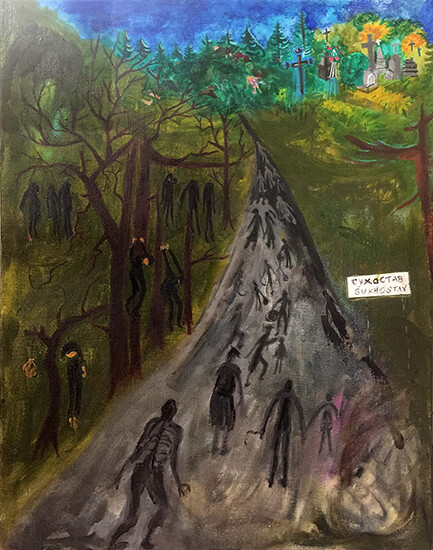
Places in Galicia
Suchostaw Mound
“We’d already gone through enough misery and horror. When the Germans came back to our town [Suchostaw] and began shooting at us, we hid in the cellars for five days without food or water. Somehow or other we managed to get by, but the thirst was unbearable. A father and mother went down to the river to get water and they never came back. Later on, we found their corpses. The day before yesterday, when the shooting fell off slightly, we ventured out of the cellars. The general ordered all Jews, including children, to assemble in the marketplace. There were sixty-eight of us. Thirty men were pulled out, arrested, and put in the trenches. We don’t know what’s going to happen to them. The rest of us were banished. We left on foot. Walking was terrible. It was raining. The road was covered with thick mud, and my daughter was pregnant, ready to give birth any moment—and we also had the two little boys. We dragged ourselves along for twenty-four hours. At one point, my daughter asked me: 'Mama, look! What’s hanging from those trees?' I looked. There were three Jews. I was afraid to take a closer look—I might know them.”
- From “The Enemy At His Pleasure” [Original title: The Destruction of Galicia], S. Ansky, pg. 37-38
Artist’s note: I was in Suchostaw on Friday, September 14, 2018. Suchostaw is the town where my maternal grandfather Joseph Tolpen was from. When we were there, we found a local woman, Maria, who took us to the town Greek Orthodox cemetery, where she pointed out a mound, somewhat apart from the elaborate graves, which she said her mother told her that was where the Jews of Suchostaw were shot by the Nazis and buried into a mass grave. When I asked Maria how her mother knew about it, she said that her grandmother was a witness. Maria’s grandmother told her daughter that the mound was moving for several days afterwards.